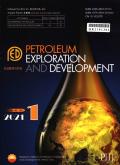A simulation study of biogeochemical interactions in cyclic underground bio-methanation of carbon dioxide and hydrogen
IF 8
Q1 ENERGY & FUELS
引用次数: 0
Abstract
A coupled PHREEQC-MATLAB simulation approach is proposed to investigate the dynamic changes in rock porosity, gas storage capacity, formation water salinity, and reservoir temperature driven by biogeochemical interactions during cyclic underground bio-methanation (UBM) of CO2 and H2, and to quantitatively examine how the evolution of these parameters influences CH4 production efficiency. The results indicate that during the cyclic UBM of CO2-H2, the formation water undergoes a dynamic acid-base alternation, leading to periodic mineral dissolution and precipitation with limited impact on rock porosity. Across different mineral systems, the maximum CH4 production rate remains consistently around 3.6×10−3 mol/(L·d) in each cycle. With an increasing number of cycles, under high initial salinity conditions, the metabolic water produced by methanogens can significantly reduce the formation water salinity, gradually enhancing the CH4 production rate to levels comparable with those under low initial salinity. Additionally, the increased volume of produced water reduces the gas storage capacity of the reservoir. This reduction becomes more pronounced at higher initial CO2-H2 pressures, accompanied by a more significant increase in CH4 production rate increment. Furthermore, the heat generated by methanogen metabolism leads to an increase in reservoir temperature, with the extent of temperature rise significantly influenced by heat loss. If the heat loss is neglected, the reservoir temperature can increase by up to 17.1 °C after five cycles (10 years). When the reservoir has a higher initial temperature, the elevated thermal conditions may reduce CH4 production efficiency.
二氧化碳和氢气地下循环生物甲烷化过程中生物地球化学相互作用的模拟研究
采用PHREEQC-MATLAB耦合模拟方法,研究了CO2和H2循环地下生物甲烷化过程中生物地球化学相互作用驱动下岩石孔隙度、储气容量、地层水矿化度和储层温度的动态变化,并定量研究了这些参数的演化对CH4生产效率的影响。结果表明,在CO2-H2循环UBM过程中,地层水经历了动态的酸碱交替,导致周期性的矿物溶解和沉淀,对岩石孔隙度影响有限。在不同的矿物系统中,每个循环中CH4的最大产率始终保持在3.6×10−3 mol/(L·d)左右。随着循环次数的增加,在高初始盐度条件下,产甲烷菌产生的代谢水可以显著降低地层水盐度,逐渐将CH4产率提高到与低初始盐度条件下相当的水平。此外,采出水体积的增加降低了储层的储气能力。在较高的初始CO2-H2压力下,这种减少更为明显,同时CH4生成速率增量也有更显著的增加。甲烷菌代谢产生的热量导致储层温度升高,温度升高的幅度受热损失的影响显著。如果忽略热损失,在5个循环(10年)后,储层温度可升高17.1°C。当储层初始温度较高时,升高的热条件会降低CH4的生产效率。
本文章由计算机程序翻译,如有差异,请以英文原文为准。
求助全文
约1分钟内获得全文
求助全文

 求助内容:
求助内容: 应助结果提醒方式:
应助结果提醒方式:


